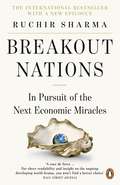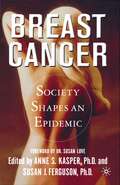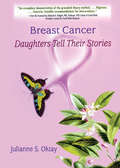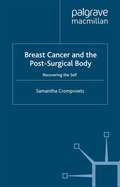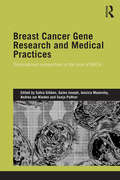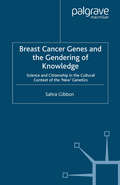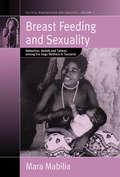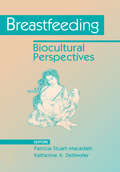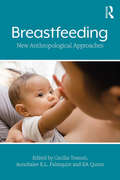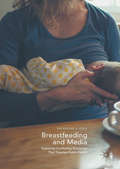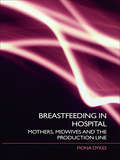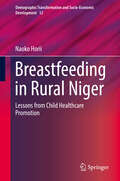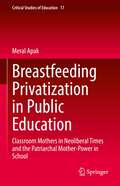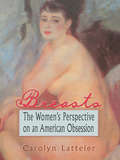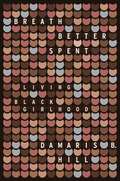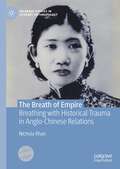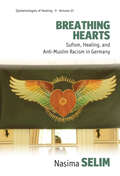- Table View
- List View
Breakout Nations: In Pursuit of the Next Economic Miracles
by Ruchir Sharma'The old rule of forecasting was to make as many forecasts as possible and publicise the ones you got right. The new rule is to forecast so far in the future, no one will know you got it wrong.'Ruchir Sharma does neither. In Breakout Nations he shows why the economic 'mania' of the twenty-first century, with its unshakeable faith in the power of emerging markets - especially China - to continue growing at the astoundingly rapid and uniform pace of the last decade, is wrong. The next economic success stories will not be where we think they are. In this provocative new book, Sharma analyses why the basic laws of economic gravity (such as the law of large numbers, which says that the richer you are the harder it is to grow your wealth at a rapid pace) are already pulling China, Russia, Brazil and other vast emerging markets back to earth. To understand which nations will thrive and which will falter in a world reshaped by slower growth, it is time to start looking at the emerging markets as individual cases. Sharma argues that we must abandon our current obsession with global macro trends and the fad for all-embracing theories. He offers instead a more discerning, nuanced view, identifying specific factors - economic, political, social - which will make for slow or fast growth.Spending much of his professional life travelling in these countries as Head of Emerging Markets at Morgan Stanley, Sharma is uniquely placed to present a first-hand insider's account of these new markets and the changes they are undergoing. As the years of unbelievably swift growth draw to their close, this book shows us how it is time for both investors and economists to halt their blind thrust towards an impossible future.
Breast Cancer: Society Shapes an Epidemic
by NA NABreast Cancer: Society Shapes an Epidemic provides an innovative look at the social and political contexts of breast cancer and examines how this illness has become a social problem. This is not a book about breast cancer as a biological disease, its diagnosis and treatment, or the latest research to cure it. Rather, it looks at how economics, politics, gender, social class, and race-ethnicity have deeply influenced the science behind breast cancer research, spurred the growth of a breast cancer industry, generated media portrayals of women with the disease, and defined and influenced women s experiences with breast cancer. The contributors address the social construction of breast cancer as an illness and as an area of scientific controversy, advocacy, and public policy. Chapters on the history of breast cancer, the health care system, the environment, and the marketing of breast cancer, among others, tease apart the complex social forces that have shaped our collective and individual responses to breast cancer.
Breast Cancer: Daughters Tell Their Stories (Social Work Ser. #Vol. 20)
by Julianne S Oktay J Dianne Garner"I will always and forever feel I have a 'hole' in my life where my mother once existed.""I think, when you have to think about the fact you might have to take care of your parents someday and juggle kids at the same time...It's a scary proposition.""We had open communication during and before the breast cancer. But then after the breast cancer, I was often afraid to bring things up, in trying to protect Mom."This insightful book tells the stories of women whose mothers had breast cancer. It uses their own voices to express the common fears and expectations of daughters in the periods before and during their mothers' illnesses, involving genetic risks, death and dying, and changes in their relationships. The case studies, tables and figures, and two appendices will benefit health professionals and counselors, while the poignant narratives will help mothers and daughters better understand their experiences with breast cancer."I was kind of surprised to be alive and free of cancer at age 42, when at this point my mother was crippled by metastases. When I get to be 43-the age at which my mother died, or maybe when I get to 44-it's like, 'what do I do?' I have this life that I didn't expect to have."Breast Cancer: Daughters Tell Their Stories presents the results of a qualitative, grounded theory study of breast cancer survivors, providing in-depth information about an aspect of breast cancer that has been previously overlooked. The book examines the daughters' experiences through four phases-the period prior to mother's illness, the period during mother's illness and treatment, the period following mother's death (if mother dies), and the long-term impact. From this study, recommendations are compiled for providing or improving services for tomorrow's daughters."The radical mastectomy left her scarred and disfigured below her nightgown. It was bruised and nasty looking. That was kind of scary. I think that has terrified me since. Sometimes I'll have pains in my left breast and that's what I visualize. It's terrifying.""I'm not really obsessed about dying of cancer. I'm more along the line of, 'If this is going to happen to me, and there's a chance it's going to, I'm gonna survive. I'm not going to die from it."From an empathetic perspective, this book reveals how many daughters react to and deal with their mothers' diagnoses, depending on their age and family situation at the time of their mothers' illnesses. It shows how daughters can gain a more accurate idea of their level of risk by providing educational materials and developing new strategies for communication. It also helps breast cancer survivors see how their illnesses can shape their daughters' future outlook, offering new inspiration for resolving and preventing family crises.
Breast Cancer: Daughters Tell Their Stories
by Julianne S Oktay J Dianne Garner"I will always and forever feel I have a 'hole' in my life where my mother once existed.""I think, when you have to think about the fact you might have to take care of your parents someday and juggle kids at the same time...It's a scary proposition.""We had open communication during and before the breast cancer. But then after the breast cancer, I was often afraid to bring things up, in trying to protect Mom."This insightful book tells the stories of women whose mothers had breast cancer. It uses their own voices to express the common fears and expectations of daughters in the periods before and during their mothers' illnesses, involving genetic risks, death and dying, and changes in their relationships. The case studies, tables and figures, and two appendices will benefit health professionals and counselors, while the poignant narratives will help mothers and daughters better understand their experiences with breast cancer."I was kind of surprised to be alive and free of cancer at age 42, when at this point my mother was crippled by metastases. When I get to be 43-the age at which my mother died, or maybe when I get to 44-it's like, 'what do I do?' I have this life that I didn't expect to have."Breast Cancer: Daughters Tell Their Stories presents the results of a qualitative, grounded theory study of breast cancer survivors, providing in-depth information about an aspect of breast cancer that has been previously overlooked. The book examines the daughters' experiences through four phases-the period prior to mother's illness, the period during mother's illness and treatment, the period following mother's death (if mother dies), and the long-term impact. From this study, recommendations are compiled for providing or improving services for tomorrow's daughters."The radical mastectomy left her scarred and disfigured below her nightgown. It was bruised and nasty looking. That was kind of scary. I think that has terrified me since. Sometimes I'll have pains in my left breast and that's what I visualize. It's terrifying.""I'm not really obsessed about dying of cancer. I'm more along the line of, 'If this is going to happen to me, and there's a chance it's going to, I'm gonna survive. I'm not going to die from it."From an empathetic perspective, this book reveals how many daughters react to and deal with their mothers' diagnoses, depending on their age and family situation at the time of their mothers' illnesses. It shows how daughters can gain a more accurate idea of their level of risk by providing educational materials and developing new strategies for communication. It also helps breast cancer survivors see how their illnesses can shape their daughters' future outlook, offering new inspiration for resolving and preventing family crises.
Breast Cancer and the Post-Surgical Body: Recovering the Self
by S. CrompvoetsAn examination of surgical breast reconstruction which establishes a strong link between, on the one hand, the personal feelings and actions of women with breast cancer, and on the other, powerful discourses and practices of the breast cancer movement.
Breast Cancer Gene Research and Medical Practices: Transnational Perspectives in the Time of BRCA (Genetics and Society)
by Sahra Gibbon Galen Joseph Jessica Mozersky Andrea Zur Nieden Sonja PalfnerThe discovery of the two inherited susceptibility genes BRCA1 and BRCA2 in the mid-1990s created the possibility of predictive genetic testing and led to the establishment of specific medical programmes for those at high risk of developing breast cancer in the UK, US and Europe. The book provides a coherent structure for examining the diversity of practices and discourses that surround developments linked to BRCA genetics, and to the evolving field of genetics more broadly. It will be of interest to students and scholars of anthropology, sociology, history of science, STS, public health and bioethics. Chapter 8 of this book is freely available as a downloadable Open Access PDF under a Creative Commons Attribution-Non Commercial-No Derivatives 3.0 license. https://s3-us-west-2.amazonaws.com/tandfbis/rt-files/docs/Open+Access+Chapters/9780415824064_oachapter8.pdf
Breast Cancer Gene Research and Medical Practices: Transnational Perspectives in the Time of BRCA (Genetics and Society)
by Sonja Palfner Sahra Gibbon Galen Joseph Jessica Mozersky Andrea Zur NiedenThe discovery of the two inherited susceptibility genes BRCA1 and BRCA2 in the mid-1990s created the possibility of predictive genetic testing and led to the establishment of specific medical programmes for those at high risk of developing breast cancer in the UK, US and Europe. The book provides a coherent structure for examining the diversity of practices and discourses that surround developments linked to BRCA genetics, and to the evolving field of genetics more broadly. It will be of interest to students and scholars of anthropology, sociology, history of science, STS, public health and bioethics. Chapter 8 of this book is freely available as a downloadable Open Access PDF under a Creative Commons Attribution-Non Commercial-No Derivatives 3.0 license. https://s3-us-west-2.amazonaws.com/tandfbis/rt-files/docs/Open+Access+Chapters/9780415824064_oachapter8.pdf
Breast Cancer Genes and the Gendering of Knowledge: Science and Citizenship in the Cultural Context of the 'New' Genetics
by Sahra GibbonThe book examines the social and cultural context of new genetic knowledge associated with breast cancer. It looks at how this knowledge and technologies are used and received in two contrasting social arenas - cancer genetic clinics and a breast cancer research charity.
Breast Feeding and Sexuality: Behaviour, Beliefs and Taboos among the Gogo Mothers in Tanzania (Fertility, Reproduction and Sexuality: Social and Cultural Perspectives #5)
by Mara MabiliaWhereas in western countries breastfeeding is an uncontroversial, purely personal issue, in most parts of the world mother and baby form part of a network of interpersonal relations with its own rules and expectations. In this study, the author examines the cultural and social context of breastfeeding among the Gogo women of the Cigongwe's village in Tanzania, as part of the Paediatric Programme of Doctors with Africa, based in Padua. The focus is on mothers' behaviour and post partum taboos as key elements in Gogo understanding of the vicissitudes of the breast feeding process. This nutritional period is subject to many different events both physical and social that may upset the natural and intense link between mother and child. Any violation of cultural norms, particularly those dealing with sexual behaviour, marriage and reproduction, can, in the eyes of the Gogo, put at risk the correct development of an infant with serious consequences both for the baby's health as well as for the woman's image as mother and wife.
Breastfeeding: Biocultural Perspectives
by Patricia Stuart-MacadamBreastfeeding is a biocultural phenomenon: not only is it a biological process, but it is also a culturally determined behavior. As such, it has important implications for understanding the past, present, and future condition of our species. In general, scholars have emphasized either the biological or the cultural aspects of breastfeeding, but not both. As biological anthropologists the editors of this volume feel that an evolutionary approach combining both aspects is essential. One of the goals of their book is to incorporate data from diverse fields to present a more holistic view of breastfeeding, through the inclusion of research from a number of different disciplines, including biological and social/cultural anthropology, nutrition, and medicine. The resulting book, presenting the complexity of the issues surrounding very basic decisions about infant nutrition, will fill a void in the existing literature on breastfeeding.
Breastfeeding: Biocultural Perspectives (Foundations Of Human Behavior Ser.)
by Patricia Stuart-MacadamBreastfeeding is a biocultural phenomenon: not only is it a biological process, but it is also a culturally determined behavior. As such, it has important implications for understanding the past, present, and future condition of our species. In general, scholars have emphasized either the biological or the cultural aspects of breastfeeding, but not both. As biological anthropologists the editors of this volume feel that an evolutionary approach combining both aspects is essential. One of the goals of their book is to incorporate data from diverse fields to present a more holistic view of breastfeeding, through the inclusion of research from a number of different disciplines, including biological and social/cultural anthropology, nutrition, and medicine. The resulting book, presenting the complexity of the issues surrounding very basic decisions about infant nutrition, will fill a void in the existing literature on breastfeeding.
Breastfeeding: New Anthropological Approaches
by Cecília Tomori Aunchalee E. L. Palmquist Ea QuinnBreastfeeding: New Anthropological Approaches unites sociocultural, biological, and archaeological anthropological scholarship to spark new conversations and research about breastfeeding. While breastfeeding has become the subject of intense debate in many settings, anthropological perspectives have played a limited role in these conversations. The present volume seeks to broaden discussions around breastfeeding by showcasing fresh insights gleaned from an array of theoretical and methodological approaches, which are grounded in the close study of people across the globe. Drawing on case studies and analyses of key issues in the field, the book highlights the power of anthropological research to illuminate the evolutionary, historical, biological, and sociocultural context of the complex, lived experience of breastfeeding. By bringing together researchers across three anthropological subfields, the volume seeks to produce transformative knowledge about human lactation, breastfeeding, and human milk. This book is a key resource for scholars of medical and biological anthropology, evolutionary biology, bioarchaeology, sociocultural anthropology, and human development. Lactation professionals and peer supporters, midwives, and others who support infant feeding will find the book an essential read.
Breastfeeding: New Anthropological Approaches
by Cecília Tomori Aunchalee E. L. Palmquist Ea QuinnBreastfeeding: New Anthropological Approaches unites sociocultural, biological, and archaeological anthropological scholarship to spark new conversations and research about breastfeeding. While breastfeeding has become the subject of intense debate in many settings, anthropological perspectives have played a limited role in these conversations. The present volume seeks to broaden discussions around breastfeeding by showcasing fresh insights gleaned from an array of theoretical and methodological approaches, which are grounded in the close study of people across the globe. Drawing on case studies and analyses of key issues in the field, the book highlights the power of anthropological research to illuminate the evolutionary, historical, biological, and sociocultural context of the complex, lived experience of breastfeeding. By bringing together researchers across three anthropological subfields, the volume seeks to produce transformative knowledge about human lactation, breastfeeding, and human milk. This book is a key resource for scholars of medical and biological anthropology, evolutionary biology, bioarchaeology, sociocultural anthropology, and human development. Lactation professionals and peer supporters, midwives, and others who support infant feeding will find the book an essential read.
Breastfeeding and Media: Exploring Conflicting Discourses That Threaten Public Health
by Katherine A. FossThis book centers on the role of media in shaping public perceptions of breastfeeding. Drawing from magazines, doctors’ office materials, parenting books, television, websites, and other media outlets, Katherine A. Foss explores how historical and contemporary media often undermine breastfeeding efforts with formula marketing and narrow portrayals of nursing women and their experiences. Foss argues that the media’s messages play an integral role in setting the standard of public knowledge and attitudes toward breastfeeding, as she traces shifting public perceptions of breastfeeding and their corresponding media constructions from the development of commercial formula through contemporary times. This analysis demonstrates how attributions of blame have negatively impacted public health approaches to breastfeeding, thus confronting the misperception that breastfeeding, and the failure to breastfeed, rests solely on the responsibility of an individual mother.
Breastfeeding and Media: Exploring Conflicting Discourses That Threaten Public Health
by Katherine A. FossThis book centers on the role of media in shaping public perceptions of breastfeeding. Drawing from magazines, doctors’ office materials, parenting books, television, websites, and other media outlets, Katherine A. Foss explores how historical and contemporary media often undermine breastfeeding efforts with formula marketing and narrow portrayals of nursing women and their experiences. Foss argues that the media’s messages play an integral role in setting the standard of public knowledge and attitudes toward breastfeeding, as she traces shifting public perceptions of breastfeeding and their corresponding media constructions from the development of commercial formula through contemporary times. This analysis demonstrates how attributions of blame have negatively impacted public health approaches to breastfeeding, thus confronting the misperception that breastfeeding, and the failure to breastfeed, rests solely on the responsibility of an individual mother.
Breastfeeding in Hospital: Mothers, Midwives and the Production Line
by Fiona Dykes'Breast is best' is today’s prevailing mantra. However, women – particularly first-time mothers – frequently feel unsupported when they come to feed their baby. This new experience often takes place in the impersonal and medicalized surroundings of a hospital maternity ward where women are 'seen to' by overworked midwives. Using a UK-based ethnographic study and interview material, this book provides a new, radical and critical perspective on the ways in which women experience breastfeeding in hospitals. It highlights that, in spite of heavy promotion of breastfeeding, there is often a lack of support for women who begin to breastfeed in hospitals, thus challenging the current system of postnatal care within a culture in which neither service-user nor provider feel satisfied. Incorporating recommendations for policy and practice on infant feeding, Breastfeeding in Hospital is highly relevant to health professionals and breastfeeding supporters as well as to students in health and social care, medical anthropology and medical sociology, as it explores practice issues while contextualising them within a broad social, political and economic context.
Breastfeeding in Hospital: Mothers, Midwives and the Production Line
by Fiona Dykes'Breast is best' is today’s prevailing mantra. However, women – particularly first-time mothers – frequently feel unsupported when they come to feed their baby. This new experience often takes place in the impersonal and medicalized surroundings of a hospital maternity ward where women are 'seen to' by overworked midwives. Using a UK-based ethnographic study and interview material, this book provides a new, radical and critical perspective on the ways in which women experience breastfeeding in hospitals. It highlights that, in spite of heavy promotion of breastfeeding, there is often a lack of support for women who begin to breastfeed in hospitals, thus challenging the current system of postnatal care within a culture in which neither service-user nor provider feel satisfied. Incorporating recommendations for policy and practice on infant feeding, Breastfeeding in Hospital is highly relevant to health professionals and breastfeeding supporters as well as to students in health and social care, medical anthropology and medical sociology, as it explores practice issues while contextualising them within a broad social, political and economic context.
Breastfeeding in Rural Niger: Lessons from Child Healthcare Promotion (Demographic Transformation and Socio-Economic Development #12)
by Naoko HoriiThis book investigates the most effective behavior change communication (BCC) strategies to reach socio-economically vulnerable mothers to promote early initiation of breastfeeding after birth in rural Niger. It thereby goes beyond conventional research frameworks by looking into multifaceted indicators including socio-economic and demographic status of mothers, environmental health, family and community based social network and typology of field activities. The book analyses demographic indicators by using field based pragmatic perspectives to scrutinise what the numbers tell in the local context. It also analyses a unique dataset of non-health related indicators such as income poverty to measure socio-economic vulnerability of mothers, involvement of and interactions with other family and community actors in child healthcare in addition to conventional socio-economic, demographic and health seeking behavioural indicators. The book draws policy and strategy recommendations based on the thorough analysis of each risk and protective factor for breastfeeding after birth to redirect technical and financial investment towards its most effective use for the optimal coverage of populations deprived from access to basic health and social services. As such this book is a very valuable read to researchers, public health and nutrition experts and decision makers in child health.
Breastfeeding Privatization in Public Education: Classroom Mothers in Neoliberal Times and the Patriarchal Mother-Power in School (Critical Studies of Education #17)
by Meral ApakThis book unveils women’s empowerment as mothers as a notion in the school system that reinforces patriarchy rather than weakening it. It discusses how empowerment is a contested notion, even though it is mostly praised in terms of women’s emancipation. This book explores the concept that although women are breastfeeding education as mothers in the neoliberal education system, they are not necessarily doing so as a self-sacrifice as one may generalize in the context of neoliberal economy. Instead, this book argues that women are doing this as a means of investment for gaining a sense of individual power, which ironically, reinforces patriarchal values. It presents demonstrative and descriptive practical incidences in the field.
Breasts: The Women's Perspective on an American Obsession
by Ellen Cole Esther D RothblumBreasts: The Women’s Perspective on an American Obsession describes and explores our national breast fetish, which is defined as a culturally constructed obsession that is deeply interwoven with beauty standards, breastfeeding practices, and sexuality. By tracing the complex history of this erotic fascination and discovering how it affects men’s and women’s sexuality and their relationships, this book will help women accept their breasts as they are and provide male readers with insight into how women think and feel about their bodies. This awareness will enable them to better understand and empathize with women’s experiences as objects of a cultural fetish.Focusing on adult joys and anxieties about breasts, sex, and breastfeeding, this text uses research and expert opinions from several different fields, including psychology, anthropology, sociology, mythology, and sexology. You will find several other issues in Breasts: The Women’s Perspective on an American Obsession that involve men’s and women’s struggles with this obsession, such as: breast implants human psychology and breasts beauty standards and breast sexuality how breasts are portrayed in mythology and art how ancient religions saw the breast as a sign of motherhood and giver of life ”breast men” debates on how and why the breast evolved adolescent girls and breasts breast activists, such as La Leche League, who are proponents of breastfeeding in publicThrough personal interviews with men and women, Breasts: The Women’s Perspective on an American Obsession also addresses women’s pride and shame about their breasts and their confusion about the attention their breasts receive. Ultimately, this exploration of breast obsession sheds light on our society’s general fear of and ambivalence toward women’s bodies. Breasts: The Women’s Perspective on an American Obsession shows you that breasts have a venerable history and urges you to see beyond the contemporary standards of visual perfection to give you an overall sense of the female body’s power and worth.
Breasts: The Women's Perspective on an American Obsession
by Ellen Cole Esther D RothblumBreasts: The Women’s Perspective on an American Obsession describes and explores our national breast fetish, which is defined as a culturally constructed obsession that is deeply interwoven with beauty standards, breastfeeding practices, and sexuality. By tracing the complex history of this erotic fascination and discovering how it affects men’s and women’s sexuality and their relationships, this book will help women accept their breasts as they are and provide male readers with insight into how women think and feel about their bodies. This awareness will enable them to better understand and empathize with women’s experiences as objects of a cultural fetish.Focusing on adult joys and anxieties about breasts, sex, and breastfeeding, this text uses research and expert opinions from several different fields, including psychology, anthropology, sociology, mythology, and sexology. You will find several other issues in Breasts: The Women’s Perspective on an American Obsession that involve men’s and women’s struggles with this obsession, such as: breast implants human psychology and breasts beauty standards and breast sexuality how breasts are portrayed in mythology and art how ancient religions saw the breast as a sign of motherhood and giver of life ”breast men” debates on how and why the breast evolved adolescent girls and breasts breast activists, such as La Leche League, who are proponents of breastfeeding in publicThrough personal interviews with men and women, Breasts: The Women’s Perspective on an American Obsession also addresses women’s pride and shame about their breasts and their confusion about the attention their breasts receive. Ultimately, this exploration of breast obsession sheds light on our society’s general fear of and ambivalence toward women’s bodies. Breasts: The Women’s Perspective on an American Obsession shows you that breasts have a venerable history and urges you to see beyond the contemporary standards of visual perfection to give you an overall sense of the female body’s power and worth.
Breath Better Spent: Living Black Girlhood
by DaMaris HillFrom the award-winning and critically acclaimed author of A Bound Woman Is a Dangerous Thing comes a new book of narrative in verse that takes a personal and historical look at the experience of Black girlhood.In Breath Better Spent, DaMaris B. Hill hoists her childhood self onto her shoulders, together taking in the landscape of Black girlhood in America. At a time when Black girls across the country are increasingly vulnerable to unjust violence, unwarranted incarceration, and unnoticed disappearance, Hill chooses to celebrate and protect the girl she carries, using the narrative-in-verse style of her acclaimed book A Bound Woman is a Dangerous Thing to revisit her youth. There, jelly sandals, Double Dutch beats, and chipped nail polish bring the breath of laughter; in adolescence, pomegranate lips, turntables, and love letters to other girls' boyfriends bring the breath of longing. Yet these breaths cannot be taken alone, and as she carries her childhood self through the broader historical space of Black girls in America, Hill is forced to grapple with expression in a space of stereotype, desire in a space of hyper-sexuality, joy in a space of heartache.Paying homage to prominent Black female figures from Zora Neale Hurston to Whitney Houston and Toni Morrison, Breath Better Spent invites you to walk through this landscape, too, exploring the spaces-both visible and invisible-that Black girls occupy in the national imagination, taking in the communal breath of girlhood, and asking yourself: In a country like America, what does active love and protection of Black girls look like?
The Breath of Empire: Breathing with Historical Trauma in Anglo-Chinese Relations (Palgrave Studies in Literary Anthropology)
by Nichola KhanThis Palgrave Pivot combines anthropological, biographical and autoethnographic perspectives onto imperial intimacies, the transgenerational transmission of colonial and familial trauma, and violence in two kinds of household: the Chinese family in British Hong Kong and wider imperial Asia, and the Anglo-Chinese family in England. Conjoining approaches from literary anthropology, the historiography of Anglo-Chinese relations, and perspectives on colonial trauma, it highlights the relative neglect of women’s stories in customary Chinese readings, colonial accounts, and an ancestral family record from 1800 to the present. Offering an alternative view of family history, this book links the body as a dwelling for assaults on the ability to breathe—through tuberculosis, opium smoking, asthma, and panic—with the physical home that is assaulted in turn by bombs, killing, intimate betrayals, and fatal respiratory illness. The COVID-19 “pandemic of breathlessness” serves as mnemonic both for state repression, and for the reprisal of historical fears of suffocation and dying. These phenomena converge under an analytic concept the author calls respiratory politics.
Breathe - Critical Research into the Inequalities of Life (Corporeal Matters #1)
by Sandra Noeth Janez JansaBreathing is an unavoidable, vital act, yet it cannot be taken for granted, as the experiences of the pandemic, profound changes in our environment, but also structural, racist discrimination make clear. In the physical act of breathing, we are symbolically, materially and radically thrown back to our own bodies and connected to the bodies of others. In conversation with artists and theorists from different fields, the contributers to this volume explore different acts of suffocation and release. They show how the protection of bodies is unequally and ambivalently distributed and how it can be an act of resistance. It is an insistence on life, a demand for existential, political, symbolic and ethical recognition.
Breathing Hearts: Sufism, Healing, and Anti-Muslim Racism in Germany (Epistemologies of Healing #21)
by Nasima SelimSufism is known as the mystical dimension of Islam. Breathing Hearts explores this definition to find out what it means to ‘breathe well’ along the Sufi path in the context of anti-Muslim racism. It is the first book-length ethnographic account of Sufi practices and politics in Berlin and describes how Sufi practices are mobilized in healing secular and religious suffering. It tracks the Desire Lines of multi-ethnic immigrants of color, and white German interlocutors to show how Sufi practices complicate the post secular imagination of healing in Germany.
